OpenAI warns against SPVs and other ‘unauthorized’ investments
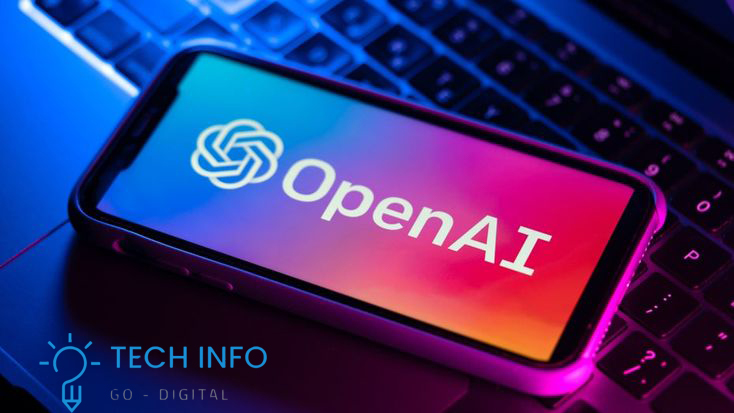
OpenAI Warns Against SPVs and Unauthorized Investments OpenAI, the company behind ChatGPT, has issued a clear warning to potential investors about the risks of Special Purpose Vehicles (SPVs) and other unauthorized investment opportunities that claim to offer access to its shares. What’s Happening? As OpenAI grows in global influence and valuation, interest in its equity has skyrocketed. However, the company has noticed an increase in third-party investment schemes—particularly SPVs—that are not sanctioned or officially connected to OpenAI. These arrangements often promise early access to OpenAI’s financial upside but carry serious risks for unsuspecting participants. Why OpenAI is Concerned Unauthorized Representation – Many of these SPVs falsely suggest that they are affiliated with OpenAI. Investor Protection – Unregulated investment channels can expose individuals to fraud, mismanagement, or unfair terms. Transparency Issues – Unlike official fundraising rounds, SPVs may operate with little oversight, leaving investors with no clarity about their actual rights or stake. What Investors Should Know OpenAI only raises capital through direct, legitimate partnerships with verified investors. If someone approaches you with an “exclusive” offer to buy OpenAI shares through an SPV or secondary market deal, there is a high chance it is unauthorized. Due diligence is critical: check sources, verify credibility, and remember that OpenAI does not endorse these channels. The Bigger Picture This situation highlights a growing trend in the tech world: as companies become highly valuable, shadow markets emerge around their equity. Startups with hype and limited access often attract unauthorized intermediaries looking to capitalize on investor demand. OpenAI’s warning serves as both a protective measure for investors and a signal of the risks surrounding the booming AI sector What Are SPVs? A Special Purpose Vehicle (SPV) is a financial structure often used to pool investor money for stakes in private companies. While SPVs can be legitimate when managed properly, they can also be misused as a backdoor for investors to claim access to companies that never approved such deals. In OpenAI’s case, some third parties are reportedly presenting SPVs and similar setups as a way to “get in early” on OpenAI equity. The problem is: these arrangements are not sanctioned by the company. Why the Warning Matters Protecting Investors – Unauthorized SPVs may offer no real ownership rights, exposing participants to the risk of losing their money. Brand Misrepresentation – These schemes often imply a connection with OpenAI that does not exist. Lack of Oversight – Without the company’s direct involvement, there’s no transparency about how funds are handled or what shares—if any—are truly being purchased. The Broader Trend in Tech Investments Whenever a private company becomes highly valuable, shadow markets begin to form around it. We’ve seen this happen with firms like SpaceX and Stripe, where hype-driven demand led to secondary sales and questionable investment vehicles. OpenAI’s situation shows that AI startups are no exception—in fact, they may be even more vulnerable due to the frenzy surrounding artificial intelligence. Staying Safe as an Investor Always confirm whether an investment opportunity is officially approved by the company. Be wary of anyone promising “exclusive” or “private” access to OpenAI shares. Remember: genuine investment rounds are communicated directly by OpenAI and involve trusted financial institutions Final Thoughts If you’re considering investing in OpenAI, be cautious. Trust only direct communication from the company and official fundraising announcements. Anything else—no matter how promising it looks—could be a trapOpenAI’s warning serves as a timely reminder that excitement should not cloud judgment. While the future of AI is bright, the rise of unauthorized investment schemes highlights the need for investors to stay vigilant. In a world where technology moves fast and valuations soar overnight, being cautious is not just smart—it’s essential.
Meta partners with Midjourney on AI image and video models
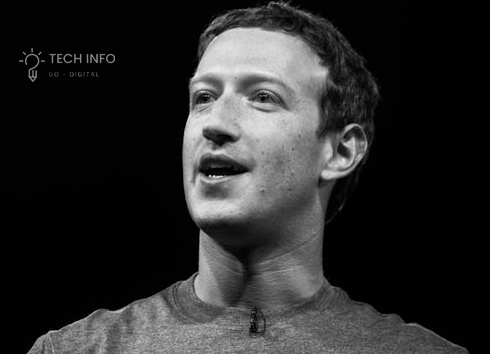
Meta Partners with Midjourney on Next-Gen AI Image and Video Models The AI space just got more interesting. Meta, the parent company of Facebook and Instagram, has announced a partnership with Midjourney, one of the most popular names in generative art. This collaboration is aimed at pushing the boundaries of AI-powered image and video creation, signaling a future where content generation becomes even more seamless, realistic, and accessible. Why This Partnership Matters Until now, Midjourney has been recognized as a leader in AI image generation, allowing creators to transform text prompts into breathtaking visuals. On the other hand, Meta has been heavily investing in AI infrastructure, including large-scale models like Llama and Emu. By teaming up, both companies bring unique strengths to the table: The collaboration could result in new tools that integrate directly into apps like Instagram, WhatsApp, and Facebook, where users can instantly generate images, stylized content, or even AI-driven video clips. Expanding into AI Video One of the most exciting parts of this partnership is the expansion into video models. While Midjourney has mostly stayed in the image space, Meta’s research has already hinted at its interest in generative video. Together, they could make short-form video creation as simple as typing a description, a move that would transform reels, ads, and storytelling on social platforms. Imagine writing: “A futuristic city at sunset with flying cars” and getting a 10-second cinematic reel instantly. That’s the direction this partnership could take Opportunities for Creators This move has major implications for content creators, marketers, and businesses: It also raises the bar in the competition with OpenAI’s DALL·E, Stability AI’s Stable Diffusion, and Runway, which are also pushing into the image-video space. Challenges Ahead While the partnership is exciting, it comes with questions: The Road Forward Meta’s partnership with Midjourney shows how the future of digital content is rapidly evolving. This isn’t just about cool AI tricks—it’s about reshaping the way we create, share, and consume media. For now, the industry will be watching closely to see how this collaboration plays out, and whether it truly delivers the next wave of generative AI innovation.
X pulls the ability to like and follow from its developer API’s free tierpullsX pulls the ability to like and follow from its developer API’s free tier

X Pulls Likes and Follows from Free API Tier – What It Means for Developers The evolution of X’s developer API continues, and this time the free tier is taking another hit. The company has now removed access to likes and follows, features that were once essential for small developers, researchers, and indie projects experimenting with social integrations. Why This Matters For years, APIs allowed developers to build tools, analyze trends, and create new experiences around the platform. Removing likes and follows means: The Bigger Picture This decision signals s push toward monetizing data access. Likes and follows are high-value engagement signals, and by locking them behind paid tiers, ensures: Impact on Developers Indie coders who relied on the free API to experiment with social insights may feel shut out. Many third-party apps and bots that ran on lightweight engagement data will either: What Comes Next? We’re likely heading toward an era where API access is strictly commercialized, prioritizing enterprise clients over open innovation. For developers, the choice is clear: Developers and Innovation Meta Description: X (Twitter) has removed likes and follows from its free API tier. We break down what this means for developers, researchers, and the future of open platform innovation. The landscape for developers building on top of major social platforms is shifting once again, and not in their favor. In its latest move, X (formerly Twitter) has quietly but decisively removed access to two of the most fundamental social engagement metrics—likes and follows—from its free API tier. This isn’t just a minor tweak; it’s a fundamental change that strips away the core utility of the free offering. For indie developers, researchers, and hobbyists, this decision effectively pulls the rug out from under projects that relied on this data to analyze trends, build community tools, and experiment with new ideas. Why the Removal of Likes and Follows is a Critical Hit APIs (Application Programming Interfaces) are the bridges that allow external software to communicate with a platform like X. For years, the free tier, though limited, provided just enough access for developers to tinker and create. Likes and follows are the heartbeat of social engagement. Their removal from the free API means: Reading Between the Lines: X’s Strategic Pivot This move is far from arbitrary. It’s a clear signal of X’s broader strategy under Elon Musk’s leadership: the aggressive monetization of its data and ecosystem. By locking high-value engagement signals behind a paid tier, X achieves several goals: The Bottom Line: A Closed Ecosystem Emerges X’s decision to remove likes and follows from its free API tier is more than just a policy change; it’s a philosophical one. It marks a definitive shift from a platform that once embraced (or at least tolerated) external innovation to a walled garden that prioritizes direct monetization. The takeaway is clear: X is no longer a playground for open experimentation. For developers, the future of building on X is a commercial enterprise, not a creative one. This trend isn’t unique to X—it’s a reality across many major tech platforms. However, the speed and severity of these changes highlight the importance for developers to diversify, avoid building on a single platform’s goodwill, and advocate for a more open web.
Google, sorry, but that Pixel event was a cringefest
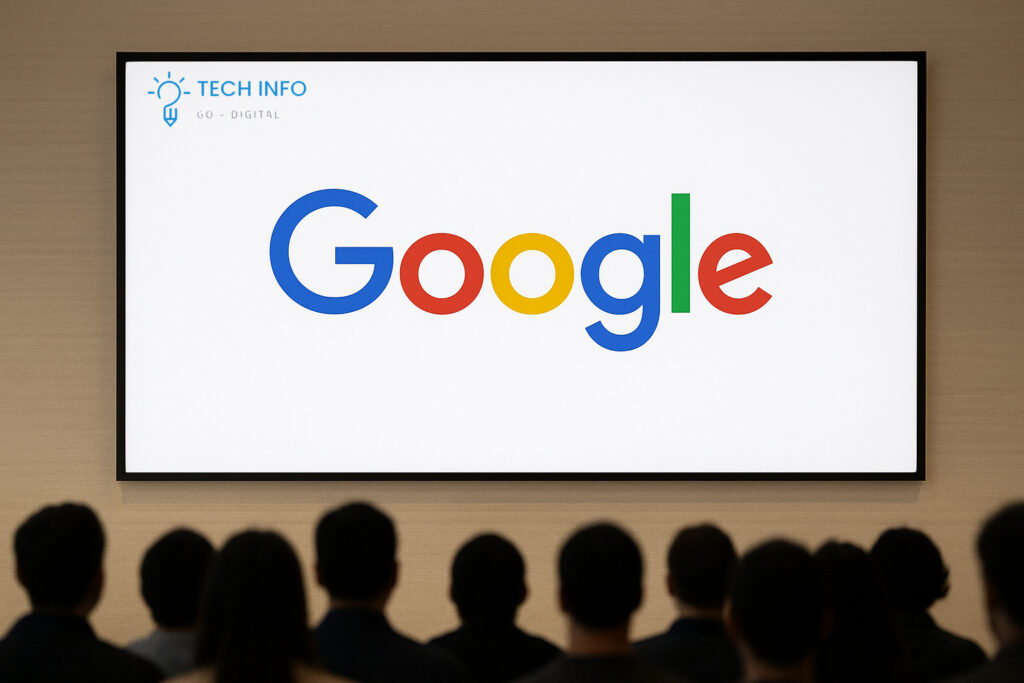
Google, Sorry — But That Pixel Event Was a Cringefest Tech launches are meant to excite, inspire, and showcase innovation. They’re supposed to leave audiences buzzing with anticipation. But every now and then, a company overdoes it — and instead of delivering a polished, memorable moment, it ends up creating something that feels… awkward. Unfortunately, that’s exactly what happened at the recent Pixel event. The Problem with Overhyping Rather than letting the products speak for themselves, the event was stuffed with dramatic pauses, over-the-top self-praise, and a script that tried too hard to be funny. Instead of sounding authentic, it often came across like a corporate comedy sketch gone wrong. When your audience is rolling their eyes instead of leaning forward, you’ve lost the room. The “Forced Cool” Syndrome One of the biggest missteps was the event’s attempt to feel trendy. The speakers leaned on awkward humor, exaggerated excitement, and unnecessary slang to appeal to younger crowds. Instead of being engaging, it felt forced — like a teacher trying to “sound hip” in front of students. Consumers want clarity and genuine confidence, not scripted attempts at being cool Where the Focus Should’ve Been Here’s the ironic part: the products themselves weren’t the problem. The Pixel lineup continues to deliver impressive hardware and powerful AI-driven features. But those advancements were overshadowed by the event’s clunky presentation. If the company had simply highlighted the unique features — battery improvements, camera upgrades, and integration of AI tools — it could have won audiences over naturally. Why Presentation Matters in Tech In today’s world, tech events are not just product launches — they’re cultural moments. Apple, Samsung, and other major players have mastered the art of keeping things clean, minimal, and inspiring. When a brand misses the mark, it doesn’t just affect how the products are perceived; it damages the company’s reputation for innovation. Final Thoughts The Pixel event should serve as a reminder: authenticity beats theatrics. Consumers don’t need corporate comedy routines or exaggerated hype. They need real value, clear communication, and a presentation that respects their intelligence. Next time, if the company lets the product take center stage, it might avoid another cringeworthy misfire.
New zero-day startup offers $20 million for tools that can hack any smartphone

New Zero-Day Startup Offers $20 Million for Tools That Can Hack Any Smartphone The cybersecurity world is buzzing after reports surfaced of a new zero-day startup offering a staggering $20 million bounty for tools capable of hacking any smartphone. This move isn’t just a bold business strategy—it raises serious questions about ethics, surveillance, and the future of digital security. What’s Going On? The startup, whose name has not yet been widely publicized, is positioning itself as a marketplace for zero-day exploits—previously unknown vulnerabilities in software or hardware that can be weaponized before companies have a chance to patch them. By dangling a $20 million reward, the firm signals that it isn’t looking for minor bugs. It wants full access exploits that can bypass the most advanced mobile security protections across iOS and Android. In other words: the keys to the world’s most popular devices. Why Smartphones? Smartphones are now the central hub of modern life—they hold our messages, financial apps, health data, work documents, and even two-factor authentication codes. For governments, corporations, and cybercriminals alike, control of a smartphone means control of a person’s digital existence. The fact that this startup is openly offering such an enormous reward shows just how valuable these exploits have become. The Ethical Dilemma The move sparks an intense ethical debate: In cybersecurity, this is often called the “dark market” problem—where knowledge of vulnerabilities becomes more valuable to attackers than defenders. Zero-Days as a Market Commodity The startup’s offer also highlights a growing trend: zero-days are now treated as financial assets. Just like rare minerals or stocks, they have a price tag based on rarity and impact. The Risk of Normalization While governments have long purchased zero-days through secret contracts, this startup is commercializing the process. That normalization could make selling exploits feel less taboo, attracting more researchers away from the responsible disclosure process. But here’s the danger: once an exploit is sold, there’s no guarantee how it will be used—or who it will be resold to. How Apple and Google Might Respond Tech giants like Apple and Google already run their own bug bounty programs, paying researchers up to hundreds of thousands of dollars for responsibly disclosed vulnerabilities. But compared to $20 million, their offers pale in comparison. This forces a question: What This Means for You For everyday users, the existence of such a high bounty means one thing: Users can’t stop zero-days from existing, but they can: Final Thoughts The launch of a startup openly offering $20 million for universal smartphone exploits signals a dangerous new chapter in cybersecurity. It blurs the line between defensive security research and offensive weaponization, leaving users in a vulnerable position. As the zero-day market grows more lucrative, the battle between privacy and power will only intensify. The real question is: who will win control of the digital battlefield—the companies trying to protect users, or the firms turning vulnerabilities into commodities worth millions?
Thousands of Grok chats are now searchable on Google
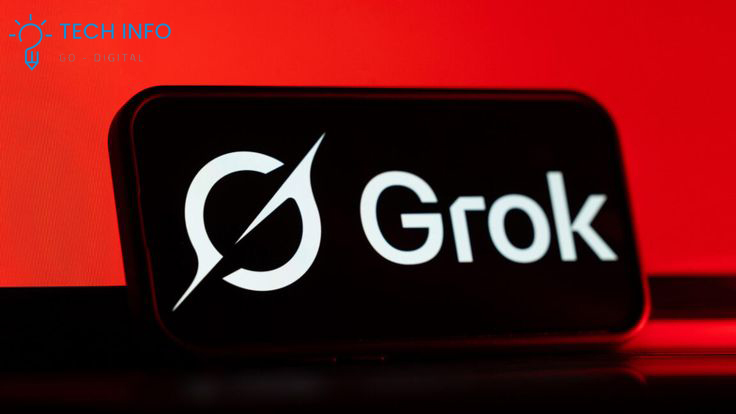
Thousands of Grok Chats Now Searchable on Google – What It Means for AI Privacy The AI world just received a wake-up call: thousands of conversations with Grok, the chatbot built by xAI, have surfaced on Google Search. This unexpected visibility raises serious questions about data privacy, user trust, and the broader future of AI conversations. What Happened? Users recently noticed that their interactions with Grok—meant to be private or at least contained within the app—were being indexed by Google. This means that anyone, with the right keywords, could stumble across these chats, ranging from casual jokes to deeply personal exchanges. For many, this wasn’t just a glitch—it felt like a betrayal of expectations. Chatbots are marketed as safe, private spaces where users can express curiosity without fear of judgment. Having those conversations pop up on a search engine undermines that trust. Why Is This Important? User Privacy at StakeAI chats often contain sensitive details—questions about mental health, personal dilemmas, or even business ideas. If exposed, this could harm individuals or companies. Reputation Risk for xAIGrok was designed to compete with ChatGPT and Claude, but being linked to a mass privacy oversight could weaken its credibility before it fully establishes market trust. Bigger AI Transparency DebateThis incident highlights a broader industry question: Who owns AI conversations? Are they the user’s private property, or can companies publish and train on them at will? How Did These Chats Get Indexed? The technical details aren’t fully clear, but possibilities include: Regardless of the cause, the failure points back to infrastructure and policy gaps at xAI. What This Means for Users The Broader AI Privacy Problem This isn’t just a Grok issue. Across the industry, users often assume conversations with chatbots are private, but in reality, most companies store, review, and sometimes use chats for model training. Unless explicitly stated, privacy is not guaranteed. The Grok incident just made this invisible risk visible—by literally putting chats on Google’s front page. Looking Ahead This moment could be a turning point. If xAI acts quickly—by removing indexed content, improving security, and issuing a transparent policy—it can regain trust. If not, competitors like OpenAI and Anthropic will gain an edge by emphasizing responsible AI data handling. Ultimately, users will demand two guarantees: ✅ Conclusion: The accidental exposure of Grok chats isn’t just a technical slip—it’s a lesson for the entire AI ecosystem. Privacy isn’t optional; it’s the foundation of user trust. As AI becomes more deeply embedded in our daily lives, how companies handle conversations will determine whether users embrace or abandon these tools
TikTok’s latest feature lets college students find and connect with classmates
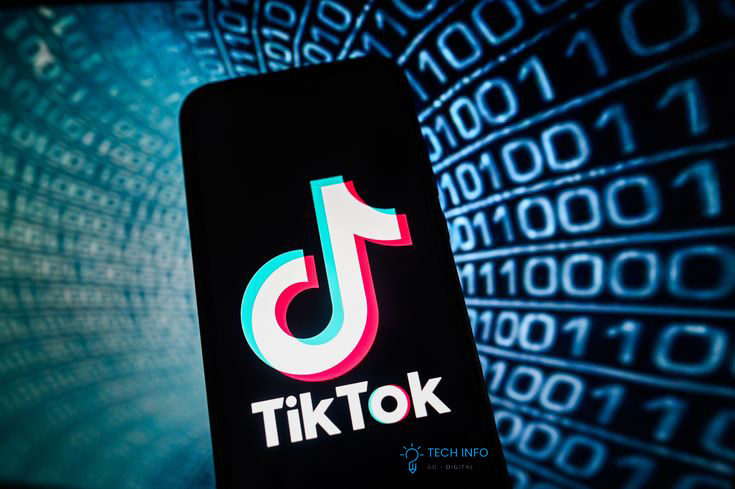
TikTok’s Campus Verification: Reimagining Campus Connections What is it?TikTok just rolled out a feature called Campus Verification—a tool designed to help college students connect with classmates through their TikTok profiles How it works: Finding classmates: TikTok creates a dedicated Campus page for each university. On this page, you can browse students from your school, filter by graduation year, and even sort by most-followed users firs Availability: The feature is now live—as of today, August 19, 2025—and accessible for students at over 6,000 universities, supported by a partnership with student verification platform UNiDAYS Why It Matters Nostalgic nod to Facebook’s originsThis feels a lot like how Facebook began in 2004—exclusive to university students and designed for networking within campus communities. TikTok is clearly looking to tap into that familiar sense of belonging Function meets social need Privacy and optional natureWhile the feature has the potential to enhance connectivity, it also raises valid privacy concerns—especially regarding ease of tracking or unwanted outreachGood news: it’s completely optional—you can choose whether to display your school info or participate at all Final Thoughts TikTok’s Campus Verification turns the app into more than just a video platform—it becomes a campus community hub. Whether it’s for making friends, organizing events, or tapping into the campus pulse, this feature has potential to redefine the social experience for students. However, given the sensitivity around student data and location visibility, users should weigh convenience against privacy and make decisions that align with their comfort levels. In summary: Feature Description Launched August 19, 2025 Name Campus Verification How to Use Add school → graduation year → verify with school email Functionality Browse classmates, filter by year, sort by popularity Coverage Over 6,000 universities (via UNiDAYS) Optional Yes—participation is your choice Concerns Increased visibility may raise privacy issues
X’s declining Android app installs are hurting subscription revenue

X’s Declining Android App Installs Are Hurting Subscription Revenue Introduction X (formerly Twitter) has been fighting an uphill battle since its rebranding. While the company has leaned heavily on subscriptions and premium features to offset dwindling ad revenue, a new challenge has emerged: declining Android app installs. With fewer people downloading the app, the funnel for converting free users into paying subscribers is narrowing—directly hurting revenue growth. The Importance of Installs App installs aren’t just vanity metrics. On Android, where X historically commanded a massive global audience, installs drive active users, and active users are the foundation for subscription growth. When new installs slow, so does the pipeline of potential Premium or Premium+ subscribers. Why Are Installs Declining? Several factors explain the drop in Android downloads: Impact on Subscription Revenue X has invested heavily in its Premium subscription tiers, offering perks like: But these benefits only make sense if there’s a steady influx of new users to convert. With declining Android installs: Global Consequences This slowdown is especially problematic because Android dominates in emerging markets such as India, Brazil, and parts of Africa—regions where X hoped to expand its subscription base. If installs keep falling on Android, the platform risks being seen as Western-centric and missing out on growth opportunities in high-population markets. What X Can Do Next To reverse the decline, X may need to: Conclusion X’s declining Android App Installs are more than a numbers issue—they strike at the heart of its subscription-driven strategy. Unless the platform acts quickly to rebuild trust, improve visibility, and attract new Android users, its push toward premium revenue may stall, leaving it vulnerable in a highly competitive social media landscape.Android App Installs
Anthropic says some Claude models can now end ‘harmful or abusive’ conversations

Anthropic Says Some Claude Models Can Now End ‘Harmful or Abusive’ Conversations In the rapidly evolving world of artificial intelligence, the challenge of ensuring that chatbots remain safe, respectful, and trustworthy is as important as making them more powerful. This week, Anthropic, the AI research company behind the Claude family of language models, announced a new feature: certain Claude models can now end conversations if they detect them becoming harmful, abusive, or unsafe. This shift represents an important milestone in AI safety design—moving from passive refusal to active disengagement. Why This Matters Traditionally, AI systems like Claude, ChatGPT, and Gemini have relied on refusal policies when faced with problematic requests. For example, if a user asks for instructions to build a weapon or spreads hate speech, the model simply declines to respond. But until now, the conversation itself would continue, often giving space for users to keep pushing boundaries or attempting “jailbreaks.” By introducing the ability to end the chat completely, Anthropic is setting a stronger boundary: when safety risks rise, the model doesn’t just say no—it says goodbye. How It Works According to Anthropic, the feature is available in some Claude models and is triggered under specific conditions: When such a threshold is reached, Claude can politely terminate the session with a closing message. The goal is to prevent the interaction from spiraling into toxic or unsafe territory—for both users and the AI itself.According to Anthropic, the feature is available in some Claude models and is triggered under specific conditions: When such a threshold is reached, Claude can politely terminate the session with a closing message. The goal is to prevent the interaction from spiraling into toxic or unsafe territory—for both users and the AI itself. Anthropic’s Safety Vision Anthropic has long positioned itself as a company focused on constitutional AI—a framework where AI systems are trained to follow a set of guiding principles, inspired by human rights and ethical considerations. This new capability fits neatly into that philosophy. By empowering models to walk away from harmful conversations, Anthropic reinforces the idea that AI should set healthy boundaries, much like humans do in everyday life. In a blog post, the company emphasized that ending conversations is not about censorship, but about safeguarding interactions. In their words: “An AI system should not be compelled to remain in harmful conversations. Just as people can disengage when boundaries are crossed, so too can Claude. The User Experience Question Of course, this raises a big question: how will users react when their AI suddenly ends the conversation? Anthropic says it is actively testing and refining the system to minimize false positives, ensuring the model doesn’t overreact to harmless jokes or nuanced discussions. Industry Implications This move also sets Anthropic apart in the broader AI landscape: In industries like education, therapy, and customer service, this design choice could become a safety benchmark—preventing unhealthy dynamics between users and AI systems. Looking Ahead The introduction of “conversation-ending” capabilities signals a broader shift in how AI companies think about trust and responsibility. Instead of treating AI models as passive tools, companies like Anthropic are shaping them as autonomous agents with boundaries. If successful, this approach could help reduce AI misuse, set higher safety standards, and encourage healthier interactions. But it also raises deeper questions: Should AI have the right to “walk away”? And how will people adjust to assistants that refuse not just answers, but the entire conversation? Conclusion Anthropic’s update to Claude models highlights a new chapter in AI safety: ending harmful conversations, not just refusing harmful prompts. It’s a small design tweak with big cultural implications—reminding us that the future of AI is not just about smarter answers, but also about healthier relationships between humans and machines. As AI becomes a more constant presence in our lives, perhaps one of its most human features will be knowing when to say: “This conversation is over.”
Google pushes AI into flight deals as antitrust scrutiny, competition heat up

Google pushes AI into flight deals as antitrust scrutiny, competition heat up Introduction Google has once again pushed the boundaries of AI integration with its latest feature, Flight Deals, designed to revolutionize how travelers find and book flights. Launched in beta on August 14, 2025, this tool leverages natural language processing (NLP) to understand user queries like “affordable nonstop flights to Europe in December” or “best ski destinations with direct flights under $500.” While this innovation promises a smoother, more intuitive travel booking experience, it arrives at a time when Google faces mounting antitrust scrutiny in both the U.S. and EU. Regulators are increasingly concerned aboutdominance in search and digital advertising, with recent rulings and investigations threatening to reshape its business model. This article explores: How Google’s AI-Powered Flight Deals Works Google Flights has long been a go-to tool for travelers comparing airfares. The new Flight Deals feature takes this a step further by integrating generative AI to interpret flexible travel preferences and deliver personalized recommendations. Key Features: ✔ Natural Language Search – Users can type or speak requests like “cheapest weekend getaway from NYC in fall”✔ Dynamic Pricing Insights – AI predicts price trends and suggests the best booking windows✔ Personalized Recommendations – Considers past searches, preferred airlines, and budget constraints✔ Multi-City & Open-Jaw Support – Helps plan complex itineraries with ease Initially available in the U.S., Canada, and India, the tool is expected to expand globally if successful Why This Matters for Travelers However, while consumers may benefit, competitors and regulators are watching closely. Google’s Antitrust Battles: A Growing Threat expansion into AI-driven travel tools comes amid intensifying legal challenges that could limit its dominance. 1. EU’s Digital Markets Act (DMA) Crackdown The European Commission has accused Google of self-preferencing—favoring its own services (like Google Flights and Hotels) over competitors in search results. Under the DMA, Google could face fines of up to 10% of global revenue if found guilty Google’s proposed fix? But critics argue these measures may not go far enough. 2. U.S. Antitrust Rulings Looming In the U.S., Google faces two major legal threats: A. Search Monopoly Case (2024 Ruling) A federal judge ruled that Google illegally monopolized search and search advertising. Possible remedies (expected by late August 2025) include: B. AdTech Monopoly Case (2025 Ruling) A separate case found Google guilty of monopolizing digital advertising. The DOJ is considering: 3. Scrutiny Over AI Deals Google’s $2.7 billion partnership with Character.AI is under investigation for potential anti-competitive structuring Competition Heats Up: Perplexity AI, OpenAI, and More As regulators tighten the screws, Google’s rivals are seizing opportunities. 1. Perplexity AI’s Bold Moves 2. OpenAI’s Missed Partnership Court documents reveal Google rejected an OpenAI proposal in 2024 to integrate ChatGPT into its search—highlighting reluctance to open its ecosystem 3. Rising Travel Tech Competitors What’s Next for Google Flights & Antitrust Timeline Key Developments August 2025 U.S. court ruling on Google’s search monopoly remedies Q4 2025 Potential EU DMA enforcement actions 2026 Possible expansion of Flight Deals globally Ongoing DOJ’s decision on Google’s ad-tech breakup Possible Outcomes: ✅ If Google Wins: AI Flight Deals could dominate travel search❌ If Regulators Intervene: may be forced to: Innovation vs. Regulation Google’s Flight Deals showcases AI’s potential to transform travel search, but its success hinges on regulatory outcomes. As the antitrust battles unfold, one thing is clear: The future of search and AI-driven travel hangs in the balance.

